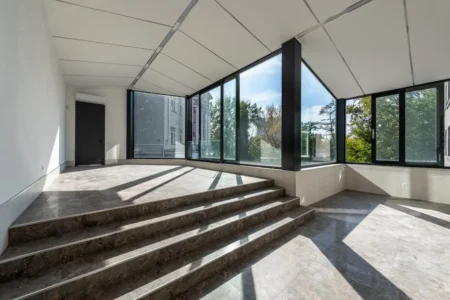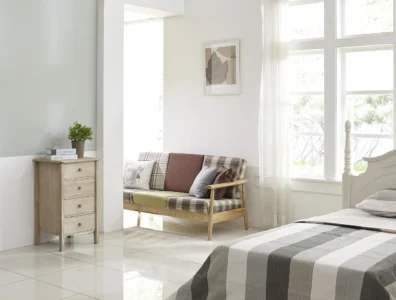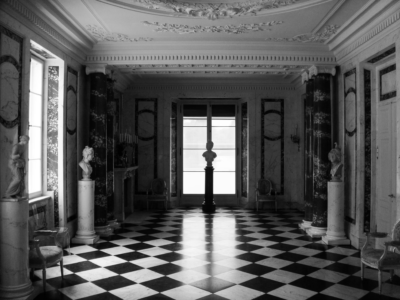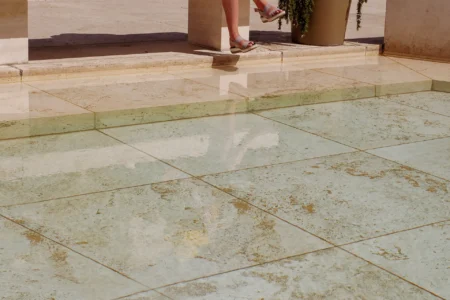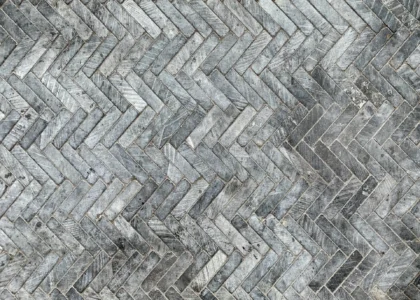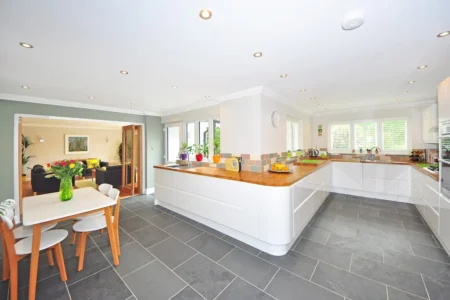Many homes have a basement that goes unused, but with enough planning and high-quality materials, it can be turned into a chic and practical living space. Tiles are frequently used as basement flooring because of their durability, adaptability, and low maintenance requirements. This article will go through some of the greatest tile floor ideas and designs for a basement, with something to fit everyone’s taste and budget.
Discover the Best Tiles for Your Basement Floor
It’s important to know what qualities a tile has to be acceptable for basement flooring before we get into the specific patterns and concepts. Basements are notorious for having more humidity and cooler temperatures than the rest of the house. Tiles should be chosen for their aesthetic value as well as their functionality.
- Flooring made of ceramic tiles is a time-honored tradition in basements everywhere. They can withstand the elements and come in a broad variety of styles, colors, and patterns. Because of its durability and low maintenance requirements, ceramic tiles are a good investment for the long run.
- Tiles made of porcelain are denser and more resilient than other types of ceramic because they are fired at greater temperatures. They absorb less liquid and are more resistant to stains because of their low porosity. It’s possible to achieve the look of more expensive materials like genuine stone or wood with porcelain tiles.
- Vinyl tiles are a cost-effective choice for basement flooring. They can withstand rain and snow, can be set up quickly, and come in many different styles. Comfort underfoot is another benefit of vinyl flooring that may be very useful in a basement.
- If you’re going for a high-end, organic feel, stone tiles are a great option. Basements may be made to look more put together by using more luxurious materials like slate, granite, or marble. They are beautiful and durable, but they cost more and need more care than certain other kinds of tile.
- Rubber tiles are an unusual but functional option for subterranean flooring. They are insulating, long-lasting, and resistant to water. Rubber flooring are not just safe for play areas but also for home gyms due to their cushiony underfoot feel.
The ideal tile for your basement floor is the one that fits your needs, tastes, and budget the best. Talking to an expert about flooring options is usually recommended.
The tile’s dimensions, hue, and design are all important factors to think about in addition to the tile itself. In a tiny basement, using larger tiles may make the space seem more open, while in a large, open basement, using darker hues can provide a sense of depth and coziness. Using patterned tiles in your basement is a great way to give it some character.
Tiles of the highest quality may be found from any number of Sydney-based retailers. “Premium Tiles Supplier in Sydney” is one such company, and they are recognized for carrying a large variety of high-quality floor tiles such as ceramic, porcelain, vinyl, stone, and even granite. You can select the ideal tile for the floor of your basement among their many options in terms of style, size, and color.
Basement Tile Floor Ideas for Every Style and Budget
Now that we’ve covered the many tile options for a basement’s flooring, it’s time to get into some basement remodeling ideas.
- If you’re looking for a minimalistic, streamlined look, a monochromatic color palette may be for you. The floor tiles, walls, and furniture may all have a neutral color scheme if you select a white, gray, or black for the tiles. Taking a simple technique like this might give your basement a stylish makeover.
- Consider a rustic style for your basement if you want it to seem warm and welcoming. Choose floor tiles that are designed to seem like stone or wood to accomplish this style. To complete the rustic feel, use old or repurposed furniture, soft lighting, and muted colors.
- Choose floor tiles with a lot of color if you want to make a statement and aren’t scared to mix and match hues. Choose tiles with bold designs or experiment with a medley of colors to create a one-of-a-kind design. It’s important to counteract the vibrant floor with neutral walls and furnishings.
- Consider installing marble or granite tiles in your basement for a touch of class if money is no object. You may improve the look of your basement by installing these tiles. Luxurious tiles call for equally sumptuous furnishings, lighting, and accents.
- Floor tiles with bright colors and fun patterns are perfect for a basement that will serve as a playground or art studio. Pick tiles with interesting shapes or patterns, or mix and match colors to make something truly unique. This may inject the basement with a lively and exciting atmosphere, making it a great place for people of all ages to hang out.
Keep in mind that these are only suggestions. The finest tile floor design for a basement will rely on your budget, the basement’s intended use, and your sense of aesthetics.
How to Add Color, Texture, and Pattern to Your Basement Tile Floor
Your basement’s attractiveness may be greatly improved by giving the tile floor some color, texture, and design. Here are some inspiring ideas and tips to help you develop your own signature style.
- Color blocking is the practice of arranging blocks of two or more colors in a strict geometric pattern. You may make a checkerboard design using black and white tiles, or a gradient with varying degrees of the same hue. This method may give your basement an eye-catching, contemporary look.
- Tiles with a unique design may give your basement a sense of style and character. There is a great deal of variety, from geometric patterns to floral themes. The basement might benefit from a feature wall or space delineation, both of which could be accomplished with the help of patterned tiles. To prevent the room from looking too busy, it is important to pair the patterned tiles with simple, neutral furnishings.
- Basements might benefit from the added depth and dimension that textured tiles provide. They can be embossed, engraved, or etched to give off the appearance of other materials like wood, stone, or cloth. Tiles with a textured surface that increases traction are an excellent option for wet areas like basements.
- Mosaic tiles are little pieces of tile that are put together to form a larger picture or design. They can make even your basement feel more like a high-end establishment. The floor itself might become a work of art if decorated with mosaic tiles.
- Swap and Change: Don’t be afraid to combine different kinds of tiles for a one-of-a-kind design. You could mix tiles of different colors, sizes, shapes, or even materials. For instance, you could pair large, neutral-colored tiles with small, colorful tiles to create a contrast. Or, you could pair glossy tiles with matte tiles to create a textural contrast.
Remember, adding color, texture, and pattern to your basement tile floor is all about creativity and personal preference. Don’t be afraid to experiment and think outside the box.
Conclusion
The basement floor is often overlooked, but with the appropriate tiles, it can become a beautiful and practical extension of your house. There is a tile for every taste and budget, whether you’re looking for the timeless beauty of ceramic tiles, the strength of porcelain, the low cost of vinyl, the elegance of stone, or the convenience of rubber. You may make your basement tile floor a unique expression of your style by adding color, texture, and pattern. As a result, why hold off? If you want to enjoy your basement more, it’s time to start planning a restoration project.
Frequently Asked Questions (FAQs)
Which tiles are best for basement floor?
The best tiles for a basement floor are those that are durable, water-resistant, and easy to maintain. Ceramic and porcelain tiles are popular choices due to their durability and wide range of designs. Vinyl tiles are also a good option for their water-resistance and affordability. If budget is not a constraint, stone tiles like granite or marble can add a touch of luxury.
Is it a good idea to tile a basement floor?
The floor of a basement should be tiled, that is a fantastic idea. Basements tend to be wet and rough, so it's best to choose tiles since they are long-lasting, simple to clean, and water-resistant. They may be found in a wide range of designs, hues, and textures, letting you customize your basement to your own tastes.
How can I make my basement floor look better?
There are several ways to enhance the look of your basement floor. You can add color, texture, and pattern with different types of tiles. Consider using patterned tiles for visual interest or textured tiles for added depth. You can also use rugs and carpets to add warmth and comfort.
What color flooring is good for a basement?
Consider the basement's square footage and the amount of natural light before deciding on a floor color. Basements that are cramped or dimly lit can be made to feel more spacious by painting the walls a light color like beige or light gray. Darker hues, such as brown or dark gray, may lend depth and warmth to a bigger basement.


